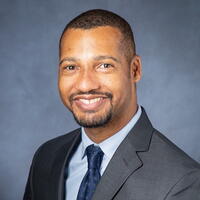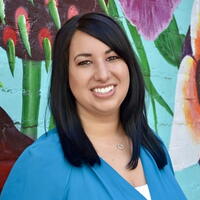
Coming off the heels of Moving the Needle, ICMA’s inaugural Equity Summit, there is so much to take in from the engaging topics covered by speakers. From the array of subjects, tools, resources, and stories shared, the importance of getting everyone on a mission to achieving equity is the resounding message and key takeaway of the summit. No matter where your organization is at on its equity journey, getting everyone aboard the equity train is a crucial step to bridging disparity gaps in your community.
Through the breakout session, Getting Everyone Aboard the Equity Train, ICMA Equity Officer Cohort members Andrea Alicoate, diversity and special projects manager, Mesa, Arizona, and Jonathan Butler, equity manager, San Antonio, Texas, outlined just how you can get your organization and community at-large on the crucial path to equity.
The Roadmap to Equity
Diversity, inclusion, and equity. These buzzwords are floating around a lot, but what does each one mean in terms of your organization and community? While each word may sound similar, diversity and inclusion are the stepping stones to achieving the ultimate goal of equity.
In terms of your organization, diversity means hiring staff from underrepresented groups. Ensuring that your staff accurately reflects your community demographic is important in meeting the needs of the cultures that your community represents. Once your staff is diversified, the next step is to actively include staff from underrepresented groups in giving input on the decision-making process. Equity is finally achieved when those from underrepresented groups play a more active role in the decision-making process. Your organization perpetuates equity by putting a magnifying glass on conditions within your community and by developing policies and practices aimed at bridging the gaps that will increase success for all groups.
To better familiarize yourself with other terms related to race, equity, and social justice, review ICMA’s glossary of terms.
Getting Everyone Aboard

Since equity is the key to forging a better organization and community for all, getting everyone on the same path to achieving equity is a crucial first step. Remember that equity work is not a single project, executed by one individual. It takes buy-in from all parties involved. Furthermore, it takes recognition that local government has played a major historical role in creating and perpetuating racial inequities that have prolonged deep, pervasive disparities across all markers of success. Even though your organization is not actively intending to discriminate, it is your obligation to examine all policies and practices to determine if there are any underlying drivers of inequalities within your organization. Once those inequities are brought to light, there must be immediate action to remedy them through an equity workplan.
In the case of speaker Jonathan Butler and the San Antonio Office of Equity, the process of getting everyone aboard the equity train is broken down into three steps: normalizing concepts of social justice within local government, organizing staff around advancing equity in each of their own departments, and operationalizing equitable policies, programs, and procedures within local government.
Your Equity Workplan In Action
Now that you know the steps it takes to create a more equitable community, it is time to put them into action with the help of your colleagues. Your equity workplan can start by normalizing equity through training, using local government staff as equity trainers.
Joining ICMA’s Equity Cohort is an effective way to get you and your staff acclimated to spearheading their roles as equity trainers.
Next, organize by forging a local-government-wide equity committee and providing various equity resources to departments. Finally, operationalize by forming and implementing department strategies within your community, using equity assessments, plans, and tools.
Equity tools that the San Antonio Office of Equity uses to advance equity within their community include an equity SWOT analysis of the community, an equity trainer program, department equity assessments and action plans, rapid response plans, racial equity indicator reports, budget equity practices, a citywide equity committee, and an equity atlas. Utilizing these tools will not only give you a more all-encompassing view of your community, but will equip you with the ability to better address and advance equity in a way that is driven by data and tailored specifically to your community. Access these resources here.
What Your Community Could Look Like

Implementing equity tools and looking at your community through an equity lens will transform the lives of everyone, not just those in marginalized groups. Fostering a more equitable community is a series of small steps that lead to big change. Steps as small as including curb cuts in sidewalks, which may have been originally designed to make using sidewalks easier for those in wheelchairs, they are also great for parents using strollers, delivery workers using dollies, bicyclists, and more. Curb cuts in sidewalks exclude no one, and the same goes for all other equity initiatives. Recognizing that equity work is meant to benefit everybody is the realization you must guide your community toward in order to create a better place for everyone to call home.
Speaker Andrea Alicoate and the city of Mesa used their own equity workplan to enable equitable community engagement, an inclusive approach to community decision-making, where those who are most affected by a decision have a voice in how those choices are being made. Through this approach, Mesa has facilitated a very creative avenue for community engagement through MABEL, the Mobile Art-Based Engagement Lab.
No matter how many cultures are represented in your community, art is a level playing field where barriers can be easily broken down, opening the doors to communication and greater understanding of community values.
Through MABEL, Mesa community members can enjoy printing resources, button-making, a mobile community center, and so much more, no matter where they are located. Accessibility to resources like this should never be limited to a single part of the community, so having mobile resources like MABEL ensures that all community members have equal opportunity to take advantage of what their community has to offer.
The Healing Starts Now
While there are many ways to approach it, the most important step in getting everyone aboard the equity train is getting started. Each step toward equity, no matter how small, will transform your community for the better. For more information on steps you can take to build a more equitable community, visit the ICMA Equity Summit platform. If you haven’t signed up yet, you can still register here. Access an array of invaluable information on the Equity Summit platform until July 11. If you are having a hard time figuring out what is next on your path to equity, the discussions and tools presented will give you some much-needed inspiration. As you go forth on your path to building and sustaining a more equitable community, keep in mind this perspective from Sheryl Davis, human rights commission director, San Francisco: “As public servants, we must shine a light on disparities, reconcile past harms, and identify solutions.” Let your desire to see your community succeed be your inspiration to lead your organization on a path to equity and join us as #ICMAMovesTheNeedle.

New, Reduced Membership Dues
A new, reduced dues rate is available for CAOs/ACAOs, along with additional discounts for those in smaller communities, has been implemented. Learn more and be sure to join or renew today!
